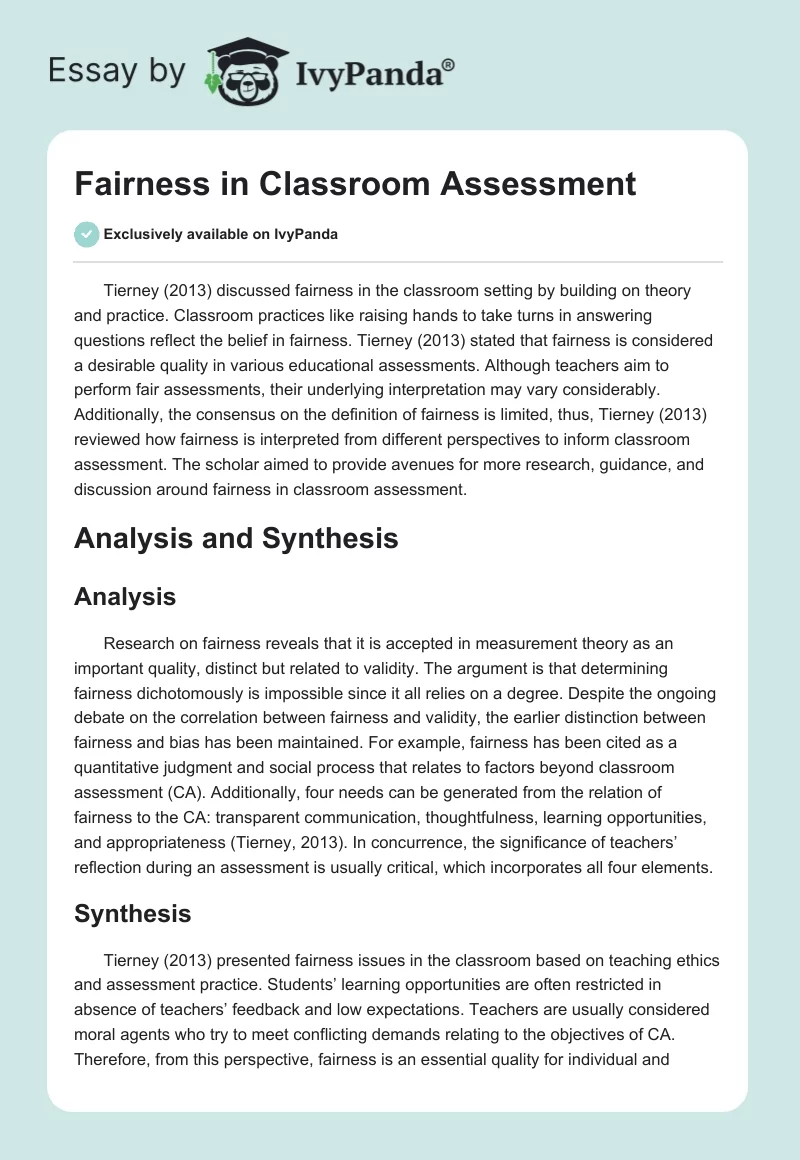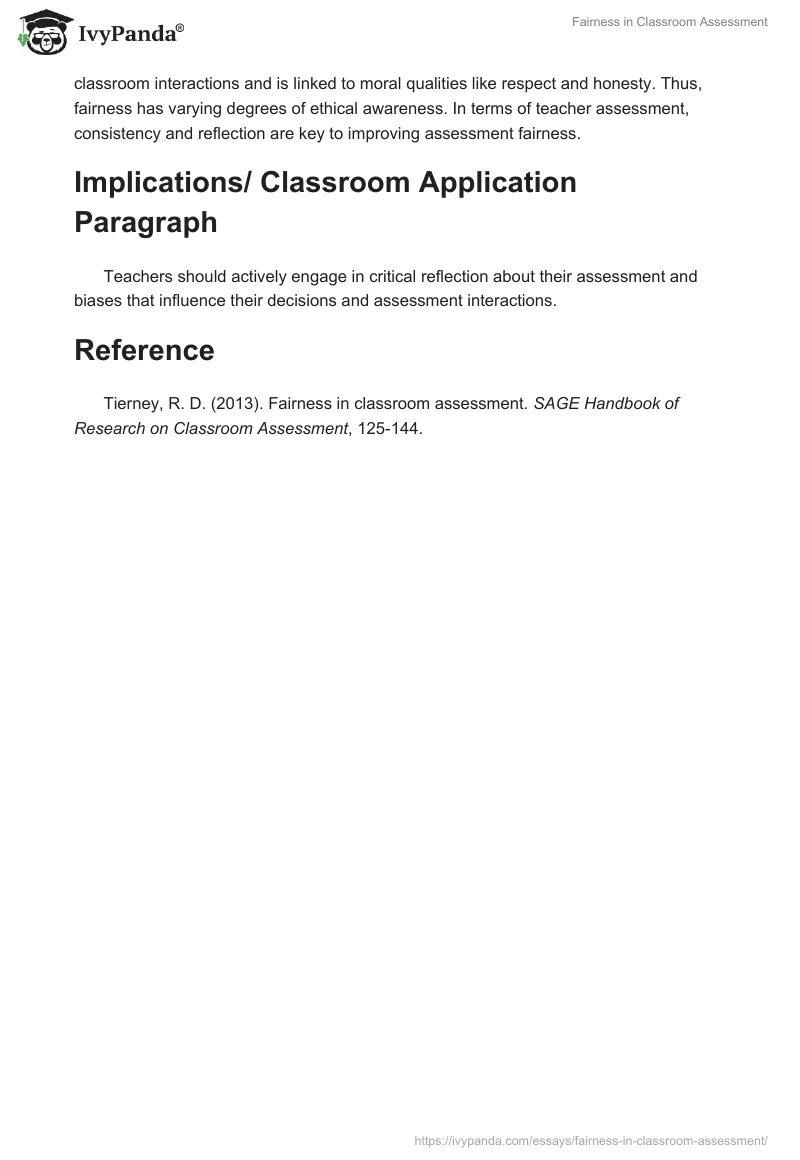Tierney (2013) discussed fairness in the classroom setting by building on theory and practice. Classroom practices like raising hands to take turns in answering questions reflect the belief in fairness. Tierney (2013) stated that fairness is considered a desirable quality in various educational assessments. Although teachers aim to perform fair assessments, their underlying interpretation may vary considerably. Additionally, the consensus on the definition of fairness is limited, thus, Tierney (2013) reviewed how fairness is interpreted from different perspectives to inform classroom assessment. The scholar aimed to provide avenues for more research, guidance, and discussion around fairness in classroom assessment.
Analysis and Synthesis
Analysis
Research on fairness reveals that it is accepted in measurement theory as an important quality, distinct but related to validity. The argument is that determining fairness dichotomously is impossible since it all relies on a degree. Despite the ongoing debate on the correlation between fairness and validity, the earlier distinction between fairness and bias has been maintained. For example, fairness has been cited as a quantitative judgment and social process that relates to factors beyond classroom assessment (CA). Additionally, four needs can be generated from the relation of fairness to the CA: transparent communication, thoughtfulness, learning opportunities, and appropriateness (Tierney, 2013). In concurrence, the significance of teachers’ reflection during an assessment is usually critical, which incorporates all four elements.
Synthesis
Tierney (2013) presented fairness issues in the classroom based on teaching ethics and assessment practice. Students’ learning opportunities are often restricted in absence of teachers’ feedback and low expectations. Teachers are usually considered moral agents who try to meet conflicting demands relating to the objectives of CA. Therefore, from this perspective, fairness is an essential quality for individual and classroom interactions and is linked to moral qualities like respect and honesty. Thus, fairness has varying degrees of ethical awareness. In terms of teacher assessment, consistency and reflection are key to improving assessment fairness.
Implications/ Classroom Application Paragraph
Teachers should actively engage in critical reflection about their assessment and biases that influence their decisions and assessment interactions.
Reference
Tierney, R. D. (2013). Fairness in classroom assessment. SAGE Handbook of Research on Classroom Assessment, 125-144.


